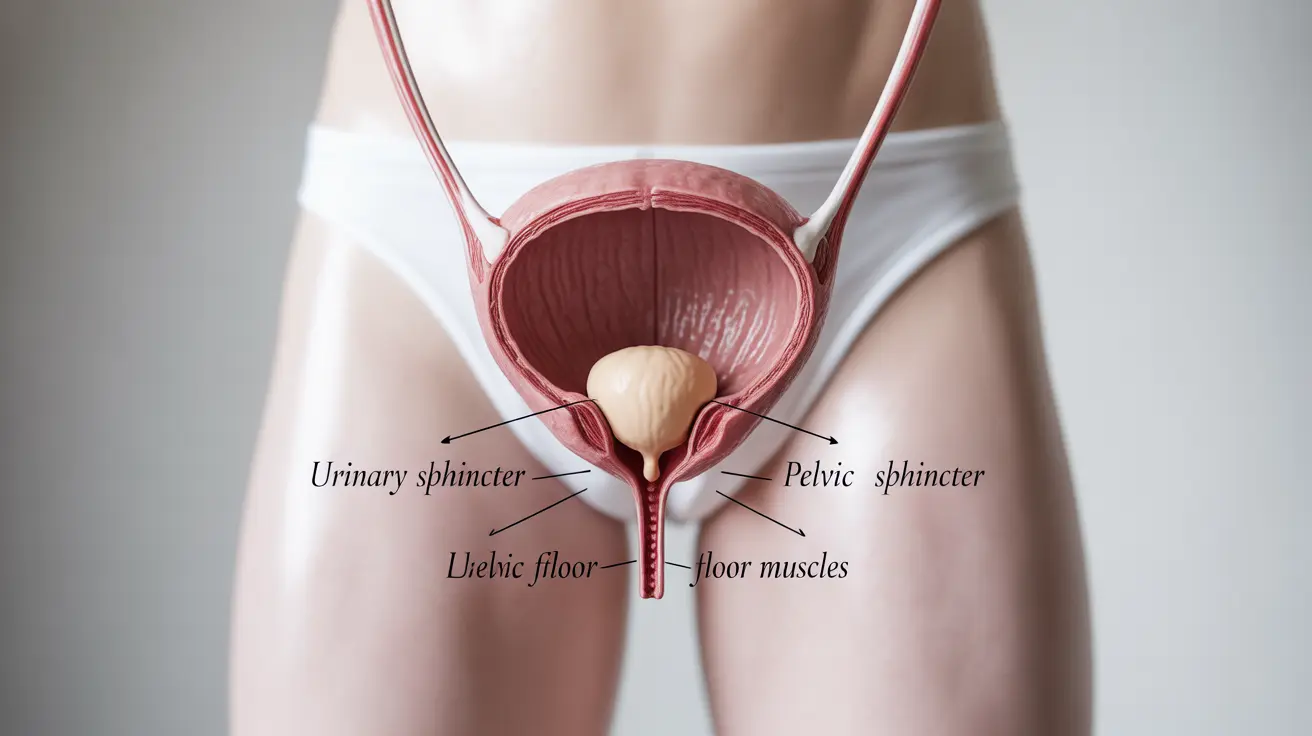Everyone has experienced that urgent need to urinate when a bathroom isn't immediately available. Whether you're stuck in traffic, sitting through an important meeting, or far from facilities, understanding how to safely manage this situation is crucial for your health and comfort.
While it's generally best to urinate when you feel the urge, there are times when temporarily holding your urine becomes necessary. This article explores safe techniques and important health considerations for managing urinary urgency.
Understanding Your Urinary System
Your bladder is a muscular organ designed to store urine until it's convenient to empty it. The average adult bladder can hold between 16 to 24 ounces of urine, though the urge to urinate typically begins when the bladder is about half full.
Your body relies on a complex system of muscles and nerves to control urination. The pelvic floor muscles and urinary sphincters work together to help you hold urine until you're ready to release it.
Safe Techniques for Managing Urinary Urgency
Mental Distraction Methods
When you need to hold your urine, these mental techniques can help:
- Focus on deep breathing exercises
- Engage in mental calculations or puzzles
- Listen to music or audiobooks
- Concentrate on work or conversation
Physical Strategies
These physical approaches can help manage urgent situations:
- Stand or sit still rather than moving around
- Avoid crossing your legs tightly
- Practice controlled pelvic floor contractions
- Keep warm, as cold can increase urgency
Health Considerations and Risks
While occasionally holding your urine is generally safe for healthy adults, certain conditions require extra caution:
- Urinary tract infections
- Pregnancy
- Enlarged prostate
- Overactive bladder
- Neurological conditions
It's essential to recognize when holding urine might pose health risks and seek appropriate medical attention when needed.
Prevention and Long-term Management
Strengthening Your Pelvic Floor
Regular pelvic floor exercises (Kegels) can improve your ability to control urination:
- Contract your pelvic floor muscles for 5 seconds
- Release for 5 seconds
- Repeat 10 times, 3 times daily
- Maintain consistent practice for best results
Lifestyle Adjustments
Make these habits part of your routine:
- Stay properly hydrated without overhydrating
- Plan bathroom breaks during long activities
- Avoid bladder-irritating foods and drinks
- Maintain a healthy weight
Frequently Asked Questions
How can I safely hold my pee if a bathroom isn't available nearby?
Use techniques like deep breathing, mental distraction, and gentle pelvic floor contractions. Stay still rather than moving around, and avoid crossing your legs tightly. These methods can help manage urgency temporarily until you find facilities.
What happens if you hold your urine too long or too often?
Holding urine too long or frequently can lead to weakened bladder muscles, increased risk of urinary tract infections, and in rare cases, kidney problems. It's important to urinate when possible and not make holding it a regular habit.
Are there risks or dangers from holding your pee for certain people or with certain health conditions?
Yes, people with conditions like urinary tract infections, pregnancy, enlarged prostate, or neurological disorders should be especially careful about holding urine. These conditions can increase the risk of complications from delayed urination.
What tips or techniques help reduce the urge to pee when you have to wait?
Effective techniques include practicing deep breathing, mental distraction, staying warm, and performing gentle pelvic floor contractions. Avoid jumping or moving around, which can increase pressure on the bladder.
How can strengthening pelvic floor muscles help me hold my pee when needed?
Strong pelvic floor muscles provide better control over urination. Regular Kegel exercises can improve muscle strength and endurance, making it easier to manage urgent situations when they arise. However, this shouldn't be used as a reason to regularly hold urine for long periods.




